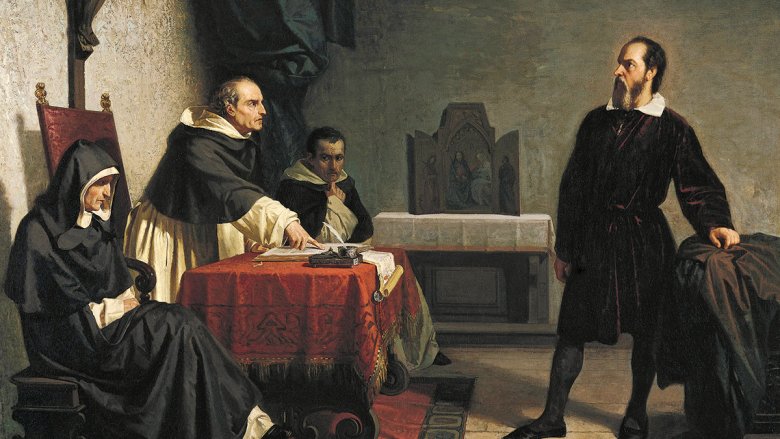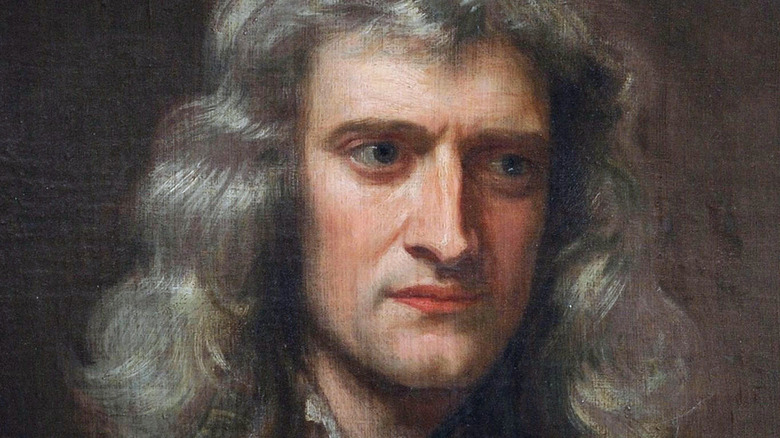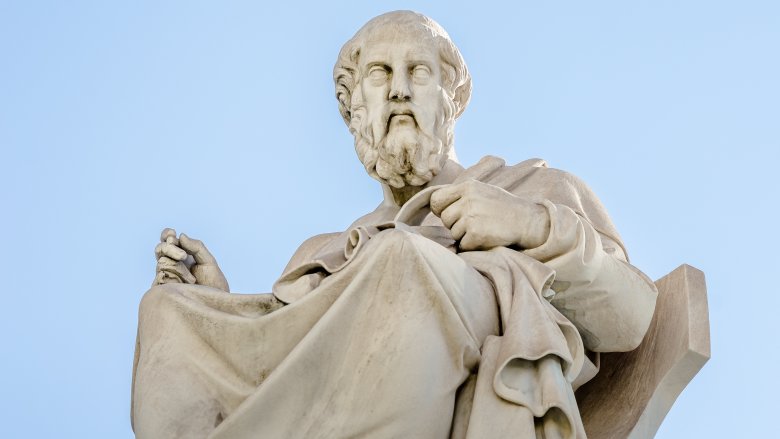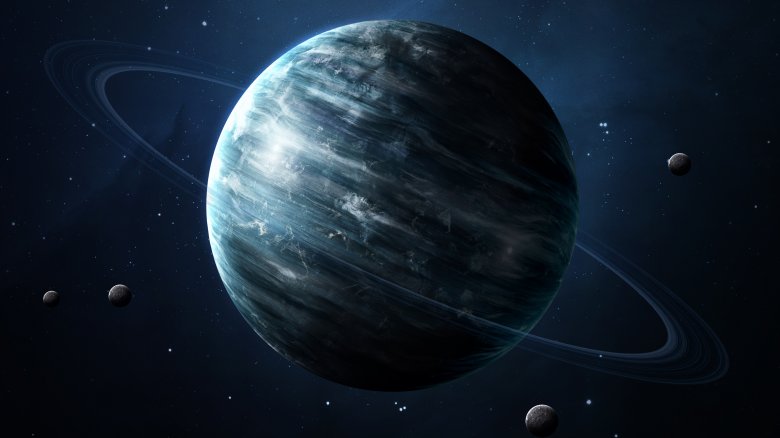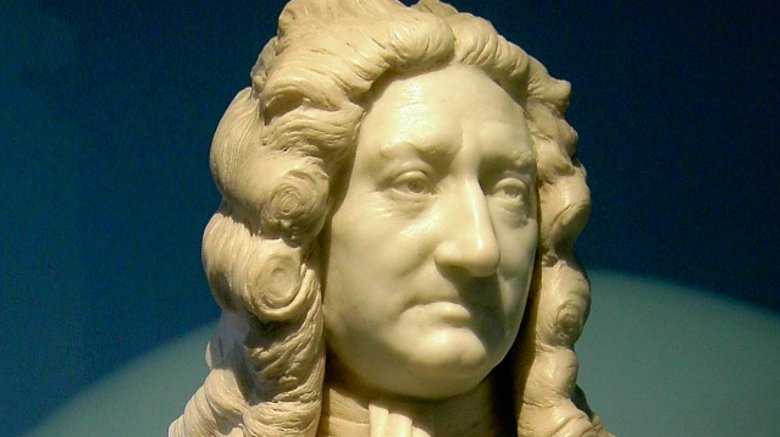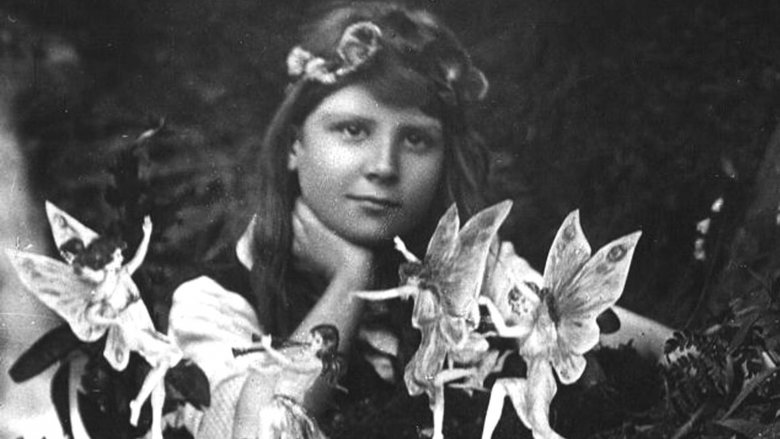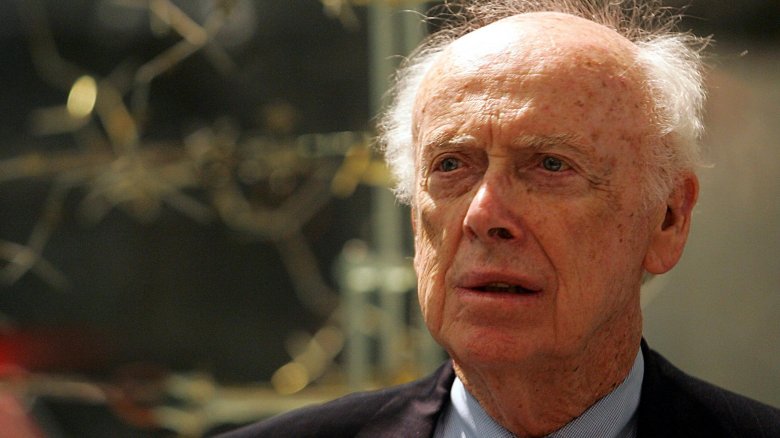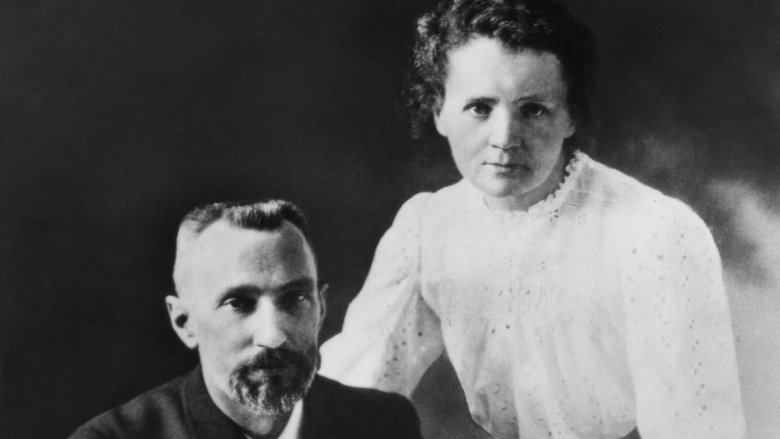Supposed Geniuses Who Will Make You Feel Smart
Geniuses are meant to be clever. There's a reason we never hear stories about Stephen Hawking, Neil deGrasse Tyson, and Richard Dawkins all getting together to huff some glue, shoot some squirrels, and accidentally start a wildfire, and that reason is that they're neither stupid nor hillbillies. (OK, so two reasons.)
But there's stupid like a drunken redneck, and then there's stupid like a nominally clever person. Everyone listed in this article is a bona fide genius. They all contributed massively to their fields and changed our understanding of the world. On the other hand, they also believed some stuff so unscientific that even Barney Rubble could have run intellectual rings around them. If you're stuck right now in your room at the All American Institute for Dum-Dums, just think. At least you've never come up with any of this hogwash.
Galileo believed in astrology
The greatest Renaissance scholar to be name-checked in a Queen song (and that's a fact), Galileo was the astronomer who proved Copernicus's whole "the Earth revolves around the Sun" thing wasn't just a hallucination brought on by too much gingerbread. His imprisonment by the Inquisition is today almost a parable about standing up to unscientific jerks, even when those jerks have thumbscrews. But there were times when Galileo was as unscientific as any inquisitor. The dude totally believed in astrology.
The Cambridge History of Science goes into some detail. While at the University of Padua, Galileo taught courses in astrology alongside other mathematical disciplines, thereby simultaneously adding to and subtracting from humanity's grand total of stupid. He put together horoscopes for patrons, for his daughters, and for himself. This last one is interesting, as it suggests the Big G wasn't just in it for the money and sweet astrologist lifestyle, but because he really believed the slow movement of gigantic balls of rock and gas millions of miles away could influence whether today would be the day he met a tall, dark, handsome stranger.
It was also during this early, season one incarnation of Galileo that the scientist's personal Big Bad first popped up. The Inquisition heard he was practicing astrology but, after some serious inquiring, eventually dropped the charge. Because using the sky to tell the future is fine, but suggesting the Earth orbits the Sun is guaranteed to get the creator of the universe hopping mad.
Isaac Newton bet big on alchemy
Mathematician, chemist, and nemesis of apples, Isaac Newton was the 17th-century Albert Einstein (which is just like being regular Einstein, except you get to wear a powdered wig). You probably remember from school how he invented gravity and saved us all from a lifetime of floating around. You probably don't remember how the whole gravity thing was little more than a sideline to his real life's work: harnessing the awesome scientific powers of alchemy to turn metals into gold.
National Geographic has the story. Over the course of his life, Newton wrote over a million words on alchemy, recording his pseudoscientific notes with as much diligence as those of his actual science. Biography.com quotes the curator of rare books at the Chemical Heritage Foundation, James Voelkel, saying alchemy "occupied a large part of (Newton's) intellectual attention." Having one of the world's brightest minds devoted to alchemy would have been fantastic if alchemy was real, but kind of a depressing waste since it isn't. Just think of all the breakthroughs Newton could've been making if he hadn't been chasing chemistry's equivalent of unicorns.
On the other hand, National Geographic argued that alchemist thought may have influenced some of Newton's smarter ideas. In particular, they suggest his revelation that white light is created by mixing lots of different colors was a result of spending so much time studying alchemy. Wow. Even when he's being dumb, Newton is still way smarter than the rest of us.
Plato and Hippocrates thought women's wombs were living creatures
Female readers! Do you ever find yourself in uncontrollable lady-hysterics, reduced to a semi-human wreck by that wily womb of yours rushing to and fro throughout your body, suffocating your vital organs with its animalistic ways? Of course you don't, but try telling that to some of the brightest minds of Ancient Greece. Guys from mere geniuses like Aretaeus of Cappadocia, to world-renowned super-brains like Plato and Hippocrates, all thought wombs were the in-body equivalent of an animal infestation.
According to Wired, the men of Greece fervently believed wombs were living creatures that could move throughout the female body, causing all kinds of inexplicable lady behaviors, like hysteria. Aretaeus even thought this wandering womb was responsible for maladies as different as loss of speech, vertigo, and sudden death. The solution he proposed with a totally straight face? To use sweet smells to lure the creature out of a woman's hooch. At least he wasn't as bad as the physicians who prescribed lots of energetic sex, presumably while leering down togas and winking.
As crazy as this sounds to our modern ears, there's an argument that Plato, Hippocrates, and even Aretaeus were being somewhat progressive in their beliefs. The Classical Journal once published an article that suggested these wise men were taking proto-scientific steps by blaming the body for "hysteria" rather than gods, or imps, or invisible hooch goblins or whatever.
The discoverer of Uranus tried to prove the Sun was home to alien life
As the man who first discovered Uranus (snicker), William Herschel must have been used to people muffling laughter whenever they saw him. However, these childish giggles may have been unrelated to the humorous name of his discovery (especially since he actually wanted to call the darn planet Georgium Sidus, after King George III). No, the most humorous thing about Herschel isn't the way we all mispronounce YOOR-an-us, but that time he tried to convince the world aliens lived on the Sun.
Herschel's theory was loopy even by the standards of the 18th century, but not without a sort of strange internal logic. As Wired explains, Herschel lived at a time when it was generally accepted that life existed on every observable planet. The big argument of the day was whether the Sun was a planet or something less scientific, like a physical manifestation of Hell. Herschel hated such non-scientific explanations, so he ironically wound up devising one of his own to disprove them. By proving the Sun was populated, he'd prove it was a planet. Unfortunately, his theory ran smack bang straight into the brick wall of being utter nonsense.
Other scientists at the time poked endless holes in Herschel's claims, never quite outright calling him a buck-toothed hayseed, but with the inference implied. In spite of this, Herschel dug in and refused to be swayed, possibly on the basis that he'd already cemented his name by discovering a planet, so the rest of us could suck it.
Edmond Halley was convinced the Earth was hollow, and somehow contained aliens
Without Edmond Halley, we wouldn't remember Isaac Newton. Halley was the guy who convinced Newton to publish his Principa Mathematica. No Halley, and Newton's just some dude who kept getting bonked by apples. He was also the first person to plot the course of Halley's Comet, a feat all the more impressive as it wasn't even named after him at the time.
That's the sane, serious scientist part. Now for the insane, scientist-in-clown-makeup part. Halley was a leading exponent of hollow Earth theory, the theory that tunneling through the crust of the planet will eventually lead you to another planet, hidden inside ours. The even crazier part, as Wired explains, is that he had good reasons for believing this.
The trouble was, Halley's beloved Newtonian physics couldn't account for the way the Earth's magnetic field fluctuates over the decades. So Halley decided there had to be another planet inside ours, spinning away and causing these strange shifts, with yet another planet inside of that, and another inside that. He reasoned that God made planets this way so he could store more life on them, in kind of the same way that apartment blocks allow us to cram more people into a smaller area. In other words: aliens lived inside our Earth.
Although Halley's theory would eventually be disproven, he never quite let go of it. In his official portrait, Halley is shown holding a piece of paper with a hollow Earth depicted on it.
The inventor of the commercial airliner thought tiny sprites lived in your brain and that the Earth had a butt
Alfred Lawson is the guy who brought the world the commercial airliner, sending an 18-seater plane into the sky in 1919. There's also a chance he came up with the concept for aircraft carriers, but we only have his word for it, and — as you're about to see — Lawson's word wasn't worth much more than that of the alcohol-induced demons shrieking at the homeless guy on the subway.
Lawson was an egomaniac who once wrote that his birth "was the most momentous occurrence since the birth of mankind." His reasoning behind this claim (via Wired) was his creation of Lawsonomy, a belief system developed out of his observation, at age 4, that blowing on dust makes it get further away, while sucking on it makes it get closer.
Lawsonomy divided the universe into things that suck and things that blow, coincidentally two phrases that aptly describe Lawson's sucky theory. The suckers ("suction") were things like eyes, which pull in the blowers ("pressure") like light, which gets sucked into our eyes and gives us the ability to see. The Earth stays suspended in space because the North Pole sucks things in, while the South Pole farts it back out into space.
Another tenet of Lawsonomy was that two tiny sprites called Menorgs and Disorgs wage war inside everyone's brains, determining how productive they are. Hilariously, Lawson once tried to explain this to a Senate Committee convened to investigate him for war profiteering. You can probably guess how that went.
The real-life patron saint of the internet believed ALL the fake news (especially involving unicorns)
Isidore of Seville is the actual patron saint of the internet, a seventh-century theologian who was canonized by John Paul II in 1997, back when the internet was powered less by horrifying racism and more by horrifying Geocities sites. As The Telegraph explains, Isidore tried to compile an encyclopedia of all human knowledge, from the names of women's garments, to the 28 types of common nouns, to the 10 Best Cat Gifs, You Won't BELIEVE No.7 (probably).
Fittingly for the martyr of our toxic online swamp, Isidore had a real susceptibility to fake news. Like your gullible relative who reposts every urban legend they find on Facebook, Isidore believed some bizarre stuff. Stuff involving unicorns and the uses of virgin girls as strippers-cum-unicorn-bait.
Let's start with the unicorns. Isidore was a firm believer in unicorns. While that in itself is pretty dumb, as Wired recounts, it's nowhere near as dumb as his beliefs on how to catch them. According to Isidore, hunters have no chance of chasing unicorns down. The only surefire method is to place a comely virgin girl in a unicorn's path, make her take her top off, then wait until it suckles her breasts and falls asleep before attacking. Without getting too judgmental, there's literally no part of that method that doesn't reek of a man who has never met — let alone lived with — an actual woman. So ... just like half the stuff you read about women on the internet today, then?
Arthur Conan Doyle believed passionately in the Cottingley fairy hoax
The Cottingley fairy hoax was the sort of mass delusion only possible in an age when everyday life was a nonstop cavalcade of horror. The year was 1919, and Britain was reeling from the horrors of the Great War, by far the deadliest war for British soldiers. (Of the combined million or so British soldiers to die in the two world wars, over 850,000 were killed in World War I.) Everyone knew someone affected.
So when photographs appearing to show two young girls playing with fairies began landing in the newspapers (above), many otherwise intelligent people believed them. Among their number was Arthur Conan Doyle, the creator of Sherlock Holmes. But Doyle went beyond just letting his emotions cloud his judgment. He put his reputation on the line to prove that fairies were real and existed at the bottom of England's gardens.
Quartz has the story. The fairy photos had been taken in 1917 by Elsie Wright and Frances Griffiths using paper models, then published two years later by Elsie's mother, who believed they were real. When the hoax blew up, Doyle became one of the girls' fiercest defenders. Doyle had already been dabbling in seances and other supernatural pursuits, so believing in fairies may not have seemed a great leap. Still, just look at those photographs. There are Sharknado sequels with more convincing special effects.
Doyle never relinquished his belief in the Cottingley fairies, even after growing public skepticism began damaging his reputation. Man, what would Sherlock say?
James Watson claimed black people's genetics made them dumber than white people
James Watson is the surviving half of Watson and Crick, not a mid-'70s folk duo, but the guys who discovered the structure of DNA. Thanks to his unscrupulous use of Rosalind Franklin's data (although The Guardian argues the theft story is a science myth), Watson has a reputation as a sexist. This is totally unfair. He should have a reputation as a barnstorming racist. In 2007, Watson claimed blacks are inherently less intelligent than whites (via The Independent).
Watson's claims were closer to the drunken ranting of your racist uncle than they were to science. Watson told London's Sunday Times he was "gloomy" about the future of Africa, as "all our social policies are based on the fact that their intelligence is the same as ours –- whereas all the testing says not really." He followed this up with, "People who have to deal with black employees find this not true."
Before a storm of "race-realist" nukes explode all over this article, here's a rebuttal of Watson's claims by New Scientist, and another by Scientific American. As Oxford University's Dr. Jan Schnupp said at the time: "Watson's comments make it very clear that he is an expert on genetics, NOT on intelligence."
Watson's remarks led to him being ostracized by the scientific community. Last anyone heard, he was selling his Nobel Prize medal to make ends meet — if "making ends meet" means "using the proceeds to buy a £2 million painting."
Marie and Pierre Curie thought mediums were the real deal
Famous today for their groundbreaking discoveries relating to radioactivity and the atom, Marie and Pierre Curie also had a strange, mostly forgotten sideline in the occult. The pair were fascinated by psychics, by seances. But most of all, they were fascinated by the Italian medium Eusapia Palladino, a notorious psychic who spent the turn of the 20th-century seducing the gullible.
A Wired article goes into more depth. Although both Curies were interested in Eusapia, it was Pierre who became obsessed with her. While attending evenings hosted by the medium, he tried multiple scientific experiments to verify her claims, including weighing her (she lost 6 pounds during one seance), and measuring ionization in the air. At one point, he even wrote to a friend claiming that there was "nothing more important from a scientific point of view" than proving the existence of psychic phenomena. This was undoubtedly true ... in the same way that discovering proof of Narnia or magic would be amazing. It's because it doesn't exist that it's fascinating.
Still, the Wired article includes the view of one Curie biographer, Lauren Redniss, who says we shouldn't judge Pierre or Marie too harshly. They were living in an absurd age. An age when we were discovering that a tiny little atom could contain unfathomable energy, and that our world was being forged by invisible forces. Faced with such madness, maybe the idea that one Italian woman might have psychic powers wasn't so out there after all.

